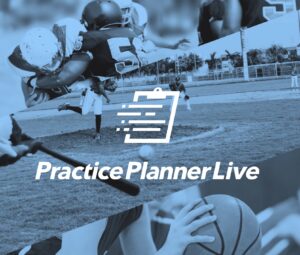Other than parents, coaches have a bigger impact on the lives of young people than just about everyone else. As coaches we know and understand that fact and are often quick to point out to others how our influence has helped the weak become strong, the average become good, and the good become great. Even though we don’t publicly keep score, many of us take detailed mental notes of how many athletes are obviously better off both on and off the court because they participated in our program.
However, what many don’t realize or admit is that there have also been some athletes who are not better off because they were coached by us. In fact, some of these players leave us worse off than when they started!
How does that happen? The answer can often be found in the principle of self fulfilling prophecy which basically says that when someone strongly believes something about themselves, they often adjust their behavior to make those beliefs come true. Because of our position and influence, we as coaches often play a huge role in the development and nurturing of these beliefs even if we don’t realize it at the time.
How We Sabotage the Success of Your Own Players
We usually do this in four incremental steps. The results can either be an upward spiral that leads to improvement, fun, and success or a downward spiral that leads to stagnation, frustration, and failure.
Step 1: Early Impressions
The first step takes place when we form our early impressions and expectations of each of our players. Sometimes this is done during tryouts and other times it takes several days and even weeks of careful observance. Occasionally we even form our impressions and expectations based on the information given to us by others.
Regardless of exactly how and when it is done, we eventually establish a mental picture of the potential value and corresponding expectations of every one of our players.
Step 2: Revealing Our Expectations
The second step occurs when we both directly and indirectly reveal those expectations to our players. This happens directly by telling each player what you expect his or her role to be. Then, constantly telling them specific ways to expand those roles. Expectations can also be indirectly revealed as well by spending more time coaching the better players and less time with the others.
Many coaches also seem to naturally develop stronger, more personal relationships with their top players. That leaves more casual, business like relationships with the bottom of their roster. Soon, players know their worth to the team by how their coach interacts with them.
Step 3: The Weight of Those Expectations
The next step in the cycle finds the athletes responding either positively or negatively to the way they are treated. The special few, the ones author Tim Grover calls “relentless,” ignore the expectations and treatment of others because they have such high expectations of themselves.
However, the majority of players gradually start to mirror whatever the coach expects of them. Those with great expectations become great. Those with lesser expectations seem to get worse as the season progresses.
Step 4: Confirmation Bias
The fourth step takes place when the coach tells himself something like “I knew he would become one of our best players.” Or, “I’m not surprised. I knew she would never amount to much.” Once that happens, either higher or lower expectations get re-established and then revealed by the coach. The behavior of the athletes then adjusts to reflect the new expectations, and the entire four step process is started over.
Obviously not every player can be the team’s leading scorer or rebounder. But every player can be treated with respect and given the necessary support and encouragement to maximize his talents and to reach his full potential. Like it or not, nearly everything you say or do influences your players in one way or another.
Don’t be satisfied that you’ve had a positive impact on some of your players or even most of your players. Make the commitment that you won’t be satisfied until you’ve made a positive impact on all of your players.
Related: 9 Tips to Recognize a Good Practice Drill
Resources:
 Practice Planner Live
Practice Planner Live
Failing to prepare is preparing to fail! Quickly create, organize, & manage your practice plans all in one place to help win games.
Create detailed practice plans! Add drills, notes, diagrams, videos, & groups with an easy-to-use interface to create a detailed practice plan in no time!
Take a risk free,14-day trial at PracticePlannerLive.com today! No credit card required!
If you found this useful, don’t forget to check out additional blog posts at TeachHoops.com. Also, check out TeachHoops on Facebook, Twitter, Instagram and YouTube.



